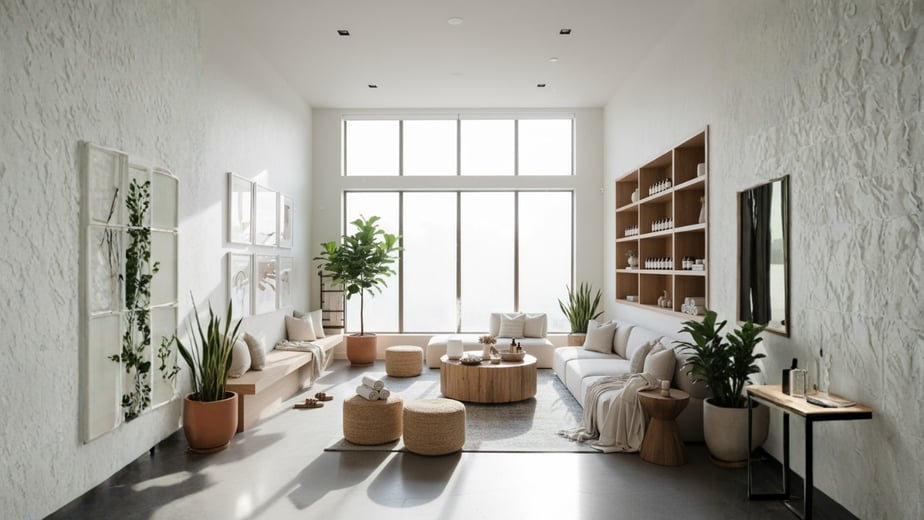Wellness as an Anchor: Health-Focused Tenants Fuel Brooklyn’s Leasing Growth

Introduction
Across Brooklyn, wellness isn’t just a lifestyle—it’s reshaping the retail market. From boutique med-spas and recovery lounges to hybrid concepts combining beauty, fitness, and health, wellness operators are claiming some of the borough’s most desirable storefronts. As residents continue to prioritize self-care and preventative health, these tenants are proving that wellness isn’t a niche—it’s a driver of long-term leasing momentum.
The New Wellness Wave
Over the past few years, Brooklyn has seen a surge of boutique wellness operators expanding beyond Manhattan. Brands like Sweathouz, Restore Hyper Wellness, Clean Market, Perspire Sauna Studio, and Bathhouse are redefining how people think about recovery, aesthetics, and relaxation.
These spaces often feature a mix of services—cryotherapy, IV therapy, infrared saunas, cold plunges, facials, and recovery pods—blurring the lines between spa and studio. What’s fueling this wave is a shift in consumer behavior: self-care is no longer occasional. It’s a weekly routine.
Daily and repeat visits make these operators especially attractive for landlords seeking consistent foot traffic and reliable rent streams.
Case Study: Perspire Sauna Studio at 510 Driggs

A prime example of this movement is Perspire Sauna Studio, a national infrared sauna and chromotherapy concept that recently opened its first Brooklyn location at 510 Driggs Avenue in Williamsburg, represented by Verada Retail.
The lease marks Perspire’s continued expansion throughout New York City, and their arrival in Williamsburg underscores how wellness brands are strategically targeting neighborhoods with high residential density, strong income demographics, and a lifestyle-oriented consumer base.
510 Driggs, with its contemporary design and proximity to the Bedford Avenue L train, offered the perfect match—a space that aligns with Perspire’s modern aesthetic and mission to make wellness more accessible to everyday consumers.
Why Landlords Are Leaning Into Wellness
Developers are finding that wellness tenants don’t just fill space—they add value to a building’s brand. A single med-spa or recovery studio can elevate the entire retail mix, attracting complementary users like coffee shops, juice bars, and boutique fitness studios.
Most wellness concepts operate within 2,000–5,000 SF, an ideal footprint for mixed-use properties. Their design requirements—private treatment rooms, open lounges, and minimal cooking infrastructure—mean lower build-out complexity and longer lease terms.
In neighborhoods such as Gowanus, Greenpoint, and Williamsburg, where residential development is booming, wellness operators are becoming the new “third space” for locals—somewhere between home, work, and recharge.
The Rise of Hybrid Wellness Concepts
Wellness today isn’t defined by one experience. New concepts are merging fitness, beauty, and healthcare into a single environment.
-
Recovery + Aesthetic: Infrared saunas, facials, and cryotherapy
-
Wellness + Social: Lounge-style spas offering memberships and community events
-
Fitness + Longevity: Studios integrating reformer pilates, breathwork, and low-impact training
This evolution reflects a broader lifestyle trend: health is now holistic. Consumers want one place where they can move, recover, and reconnect—all within walking distance of home. For Brooklyn’s dense and design-driven neighborhoods, that’s the perfect formula.
What This Means for Leasing Strategy
For landlords and brokers, incorporating wellness early in the leasing plan can shape how the entire project is perceived. A wellness anchor signals stability, sophistication, and community value—making it easier to attract other lifestyle tenants.
When marketing to wellness operators, highlight:
-
Strong residential demographics within a 5- to 10-minute walk radius
-
Transit access for consistent weekday and weekend traffic
-
Synergy with food, coffee, and fitness co-tenancy
-
Modern infrastructure: HVAC, plumbing, ADA access, and venting flexibility
In today’s market, these factors can be the deciding edge between landing a national wellness brand or losing them to another submarket.
The Bigger Picture
As the definition of retail continues to evolve, wellness is standing out as one of the most resilient categories. These operators aren’t seasonal—they’re habitual. They bring steady foot traffic, build community, and support the live-work-well balance driving Brooklyn’s growth.
In the next cycle of mixed-use leasing, wellness won’t just be an amenity—it’ll be the anchor that shapes the neighborhood around it.
You might also like...
The Return of the Neighborhood Grocer: How Smaller Formats Are Anchoring Brooklyn’s Retail Growth
Introduction Neighborhood grocery has re-emerged as one of the most reliable anchors in Brooklyn retail. Instead of sprawling 30,000+ square foot ...
How to use vacant space for experiential retail in Downtown Brooklyn
Manhattan-area and Downtown Brooklyn retail has been shaken up by many trends, from continued reliance on online shopping to reluctance to return to ...
